With the summer dying down (I think?) and the leaves changing (somewhere, I’m sure, though not in Los Angeles), listening to Otis Shanty’s UP ON THE HILL just feels right. The Somerville, Massachusetts rockers sophomore album only just came out at the end of September, but it timelessly fuses jangly pop melodies with gripping guitar solos in a way that recalls the brightest moments of Yo La Tengo’s discography—which is to say, the loose, shaggy songwriting is ideal for sweaters and walks in the brisk air or the now too frequent warm snap alike. We chatted with them about that album, their relationship to jam music, Big Nice Studios, and more! Go grab their latest over on Bandcamp!
The broad “slacker rock” genre gets thrown a lot when discussing your music, though I would argue there is a lot more musically filling out the Otis Shanty sound beyond the traditional trappings of that descriptor. But I’m curious what your own definition of that genre is, since sometimes it can be thrown around as a pejorative rather than a proper musical categorization.
Jono Quinn: This question made me think of Kurt Vile saying something along the lines of ‘man, I just let the songs go long and if my head stops boppin’ that’s how I know to cut that part.’ That’s slacker rock.
Ryan DiLello: It’s definitely thrown around. We share the looseness, frantic solos, and noisy explorations of the ‘90s bands that got that moniker, but we also focus a lot on lush textures, harmonies, smooth dynamics, and song-structure in a way that seems less ramshackle than a lot of those groups. The whole roll out of bed, pen down a song of cowboy chords, and rip it that night or stomp on a fuzz three times louder than your clean signal—approaches I still admire about those groups—don’t work for us.
Sadye Bobbette: Yeah, I think what separates us from the slacker rock genre is the focus on our vocals, melodies, and the frequent eruptions into noiser territory. Tim Presley and Cate Le Bon’s project DRINKS has been a huge influence for me, blending gorgeous harmonies with a little choppiness and noise, maybe in slacker territory.
I do want to ask about closer “Burdened,” because I think it’s my favorite song on the album; to go back to the minutia of genre briefly, I’ve seen in reviews of your debut, SUITE 33, the sound described as “jam-band mellowness” but “Burdened” feels like at any moment it could lean fully into that rollicking jam sound in a big way, and it’s an appropriately massive for a final song. What are your individual relationships with jam music, since I know you’ve described yourselves as fans, and how does that part of your fandom, if at all, inform the music.
Julian Snyder: I love this question because it addresses a fundamental aspect of our music that has evolved over time. We all love the Grateful Dead, but I am the biggest enthusiast of jam music in the band, and love Phish—I’ve attended 25 shows so far!
RD: Yeah Julian’s tried to put me onto Phish, but I can’t do it—I really don’t care for proper jam music. I can appreciate the bluegrassiness of the Grateful Dead, the insane talent of King Gizz, and completely love the Allmans, but that’s about it. I once read an essay from Mark Grief that assimilated the Grateful Dead to the Velvet Underground and some of the overlaps were really eye-opening for me.
Connected in name but I’d argue two of the best, if not the two best, American bands!
JS: When we first started writing and recording music, particularly during our college days, we often used our songs as vehicles for jams. We didn’t worry too much about where each piece would end up and instead focused on discovering new paths and peaks along the way. But like a lot of new jam bands, we sometimes failed to sync up leading to meandering and unsatisfying conclusions. Though our creative approaches have shifted and we’ve gotten tighter, I’m a firm believer in taking risks and engaging a crowd in a unique way—it’s a crucial part of the live experience for me and encourages people to come back.
RD: I’m still not super into the spiritual, experiential, or performative aspects of jamming for its own sake, but using it as a tool to write, vary, and decenter songwriting has been useful. I have found a lot of inspiration in droney music, too: Spacemen 3, Water Damage, early Kurt Vile like I mentioned, and Yo La Tengo being some favorites. We wrote “Burdened” when I was listening to a lot of that stuff—we actually cut a trippy, washed out organ solo and trimmed the guitar solo, so your jam senses were working!
So how does that song come about, because it so obviously feels like a closing song within the record it’s hard for me to imagine it conceived as anything other than that.
SB: “Burdened” was actually the first song we wrote on this record, and it happened years ago, when we first moved to Somerville.
JQ: In its inception, it was the furthest thing imaginable from the dramatic album closing rocker it became. It was the first idea born on the hill in Somerville when we moved in 2021 and it started as an erie and somber acoustic guitar riff which, for me, was the tune of the mixed anxiety and depression I experienced thanks to my first post-grad winter in an unfamiliar city away from many of my closest friends.
SB: The first few months of playing it—it took on a much more ominous form. As the weather turned colder, so did the arrangement. I think the full potential of that song was recognized when Ryan started playing with grungier, harrier guitar tones on the chorus—which unlocked the jam at the end.
That psychy, jammy guitar tone comes out in full force on “Seasonal Apprehension” too; Sadye, you hand off the lead vocal duties on that song, which doesn’t happen often. It adds a nice texture to the album in full, tell me about how that track came together.
RD: I wrote that song just minutes before recording it in the studio and the last line of the song was just ad-libbed live—we tried a few different goofy lines. It was a J Mascis “just get me to the guitar solo” kind of thing and that was fun. I had been sitting on the riff for a couple weeks and the band had jammed on it a couple times, but it really came together in the studio. It says a lot about Big Nice that we were all comfortable hashing that together. Singing makes me nervous, but the band was very encouraging that my voice worked for this tune.”
The album cover captures such a singularly lush, but also as you describe it Jono a kind of isolating sentiment. EARLY BIRDS and SUITE 33 both had similarly striking and fitting photography used to match the moods of the music for their respective packshots, what is that process like for you?
JQ: There is a strong connection between our music and physical space. It’s a theme we come back to over and over again. SUITE 33 was our dorm where we wrote almost every song on the album and the cover is a long exposure photo of that building. (Our 2019 EP) SPACE FOR GOOD THINGS referred to our namesake cabin in Otis Massachusetts and the album cover is a sketch of the floor.
RD: Finding an album cover for UP ON THE HILL was particularly challenging. We went through several film rolls, tore into the band photo album, and tried to draw up concepts for new shots.
JS: I envisioned the album as evoking a jade green color and I wanted a symbolic element within that to stand out. When Ryan found the chair, surrounded by lush green foliage, I felt the photo perfectly captured all the abstract qualities I had in mind.
RD: I think I’m the most impatient in the band with this stuff and one afternoon, I was definitely just throwing shit against the wall, and Sadye told me to relax and just wait for something to come. And on a walk down Prospect Hill the following morning, I turned to my right on the stairs and saw that dark red chair sitting on the gardener shed—where Sadye and I wrote the riff/lyrics to “Daylight Savings”—paint glowing in the hazy morning light, and I knew immediately it would be the cover.
JQ: It ended up being a perfect homage to the hill we live on that is our source of inspiration, home, and physical setting for the creation of our music.
Reading more between the lines, the idea that the music is a sonic extension and that the cover is a spiritual extension of where you are all were physically and emotionally is so compelling to me—because of how spread out band members often are, and how long writing and recording an album can take, or even how many collaborators there often are, having those things sync up as a singular true artistic statement that is congruous with the band is kind of rare and special. You can hear that connection on UP ON THE HILL.
RD: Yes! And I think it makes the band pretty intense at times—we can’t move forward on anything without that complete cohesion between members and anything else implicated. I think when we formed, we figured that was just the natural weightiness of being in a band. But making other friends in the scene, we realized how many other bands are more like “projects” that have collaborators, freelancers, folks sitting in, and whatever. Sometimes we look longingly at the lightness of that approach; other times we find our need for organic congruity deeply rewarding. Most of us have ventured into fun side projects at this point, but this group will always feel like home.
You mentioned Big Nice Studios. That space and Bradford Krieger have in some way felt synonymous with a recent run of New England indie music—obviously the studio has seen some larger national pedigree with artists like Horse Jumper of Love and Friendship but yourselves and a lot of other excellent local talent have made great albums there over the last several years. What was working in that space and with that team like?
JQ: Big Nice for me is the first recording space we’ve had that feels like an extension of our sun room where we write.
RD: It’s a beautiful repurposed mill building along the river in my home state, so to bring Otis Shanty there was a longtime dream. Those brick walls, warm lights, and the sleepy Blackstone River really complement our music. If the name didn’t give it away, the recording rooms are massive. Some walls stop short of the ceiling, so engineer/mixer Chaimes Parker placed room mics in back hallways and other nooks and crannies to catch rogue sound waves bouncing around—the mellow, warm, and haunting reverberations of that place have become part of our sound.
JQ: Our band has a deeply intuitive understanding of what we want our music to sound like, with very little ability to vocalize those feelings. But Chaimes somehow shares that understanding and becomes the fifth member of the band each time we go to the studio.
SB: The cool thing about Chaimes is he can understand multiple and sometimes contradicting visions for a project and he can translate them into something that is so thoroughly authentic to our sound.
JQ: He finishes our musical sentences before we attempt to put our ideas into words. I think we all feel loved, understood and extremely excited every time we walk in those doors with the confidence that Chaimes will help us bring the vision of our music to life.
SB: He has been a massive part of how these songs develop—he familiarizes himself with our live performance energy and channels the most conducive parts of it to recordings that also leaves space for more ideas. He makes our studio time feel so creative, engaging and above all, communal. I know I can speak for all of us in saying that Chaimes has been a really huge part of us solidifying our sound.
What does being a part of that growing New England rock scene mean right now?
RD: I think we’ve been inspired by so much of the music coming from Big Nice and its adjacent artists—Dogs on Shady Lane’s foggy, jazzy shoegaze, Number One Babe’s brilliant songwriting and guitar craftsmanship, Joyer’s mellow aggression, and Horse Jumper of Love’s fuzzy lethargy. There’s also Chaimes’ work with Roz Raskin in NOVA ONE, whose pop mastery has inspired me since high school.
You can grab UP ON THE HILL over on Bandcamp today!



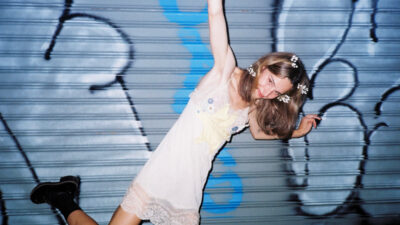
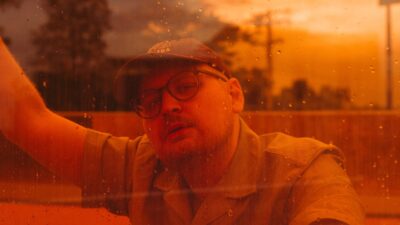
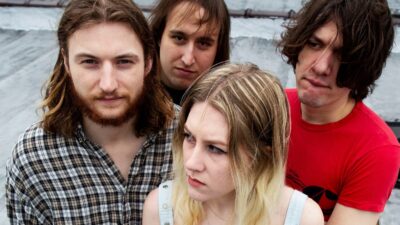

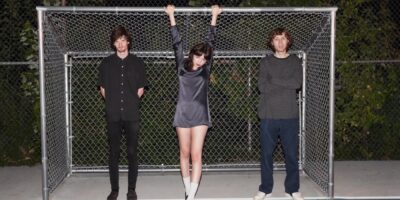

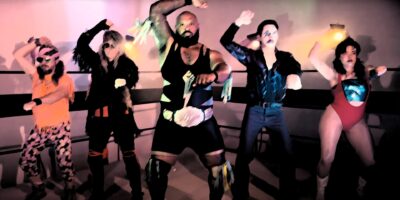
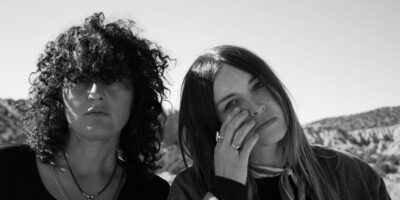

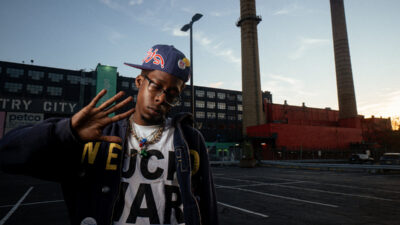
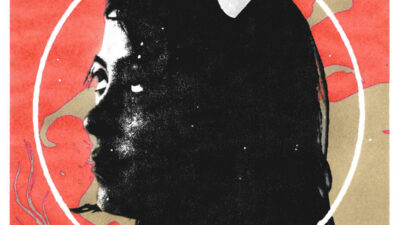

Comments